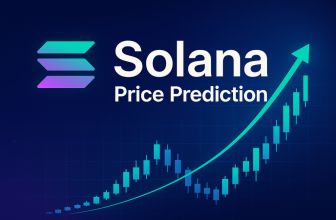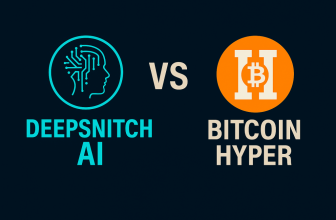
Celestia is picking up steam, and this time, it’s thanks to a major ecosystem move that could reshape how DeFi handles derivatives trading.
Solana’s Bullet, previously known as Zeta Markets, just announced plans to build a dedicated Layer-2 rollup powered by Celestia for data availability. The goal is simple but bold: to bring centralized exchange-level speed to decentralized perpetuals trading.
Celestia’s price reacted quickly to the news. It’s up almost 5% today and trading around $1.54, with trading volume jumping by roughly 9% in the past 24 hours.
That’s a clear sign the market is paying attention. Bullet’s integration gives Celestia something it’s been missing lately, a strong real-world use case that directly links its modular architecture to one of the fastest-growing sectors in crypto.
What you'll learn 👉
Why Celestia Price Is Up
The main reason behind the current move is the excitement around ecosystem adoption. By choosing Celestia as its data layer, Bullet is betting on modular scalability to deliver serious performance.
The new rollup is targeting 1.2-millisecond latency, which is nearly 300 times faster than Solana’s base layer and significantly ahead of competitors like Hyperliquid.
If Bullet actually delivers that kind of speed, it could pull in trading volumes that rival smaller centralized exchanges, and that’s where Celestia comes in.
Modular blockchains like Celestia are designed for exactly this kind of use case. They let developers build app-specific chains that can process huge amounts of data without clogging a main network.
Bullet’s adoption is proof that teams are starting to see Celestia not just as an idea but as production-ready infrastructure.
The key moment to watch will be Bullet’s mainnet launch, which is scheduled for late 2025. If it attracts meaningful trading volume and delivers a smooth user experience, demand for Celestia’s data services, and for TIA itself, could climb rapidly as more projects follow the same model.
Read Also: Dogecoin Price Prediction: Analyst Predicts DOGE Could Reach $1 in October
Supply Dynamics and Foundation Moves
While this integration brings plenty of excitement, the supply side adds a more balanced view. In July, the Celestia Foundation bought back 43.45 million TIA tokens from Polychain Capital for $62.5 million, redistributing them to new investors through a slower, controlled unlock schedule. That move removed a major early holder and helped reduce short-term sell pressure.
Since then, token unlocks have slowed dramatically. Daily releases dropped from nearly one million tokens earlier this year to about 344,000 per day in September.
That change has given the market some breathing room. However, there’s still more than 400 million TIA set to be unlocked gradually by 2027, so inflation remains part of the conversation.
The smaller unlock that happened on September 22, about 0.9% of the supply, barely affected the price. That tells you traders are becoming more comfortable with Celestia’s unlock cycle, as long as demand keeps growing at the same pace.
For now, it feels like the project has found a healthy balance between supply management and ecosystem expansion.
Read Also: Here’s Where Ripple’s XRP Price Is Headed This Week
Why This Integration Matters For Celestia
This partnership between Bullet and Celestia is more than just a technical announcement. It represents a shift in how DeFi is evolving. Derivatives trading, especially perpetuals, has always belonged to centralized exchanges like Binance and Bybit. Bullet wants to change that by bringing the same speed and liquidity to on-chain markets.
If Bullet succeeds, Celestia will be at the core of that transformation. Every trade processed on Bullet’s L2 will rely on Celestia’s data availability layer, meaning TIA will directly benefit from increased network usage.
As more projects adopt the same modular model, Celestia’s position in the ecosystem strengthens. That’s how adoption snowballs, one big integration leads to a whole wave of builders following behind.
Celestia Price Short-Term Outlook
If excitement around Bullet’s integration continues to grow in the coming weeks, Celestia could easily push toward the $1.70 to $1.85 range in the short term.
That would represent a solid 10–20% move from where it’s trading right now. A new break above $1.85 could even potentially set the stage for $2 if the momentum continues.
Alternatively, if interest declines or sentiment in the overall market turns against it, the TIA price could drop back to $1.35 to $1.40, where support has been numerous times this year. Either of these, the trend is good, supply pressure is diminishing, and demand from utility consumers is on the rise.
Celestia now has a real shot at proving its modular vision works in practice. If Bullet’s L2 actually takes off, it won’t just boost one project, it could kickstart the next big narrative in DeFi, and TIA would be right at the center of it.
Subscribe to our YouTube channel for daily crypto updates, market insights, and expert analysis.








